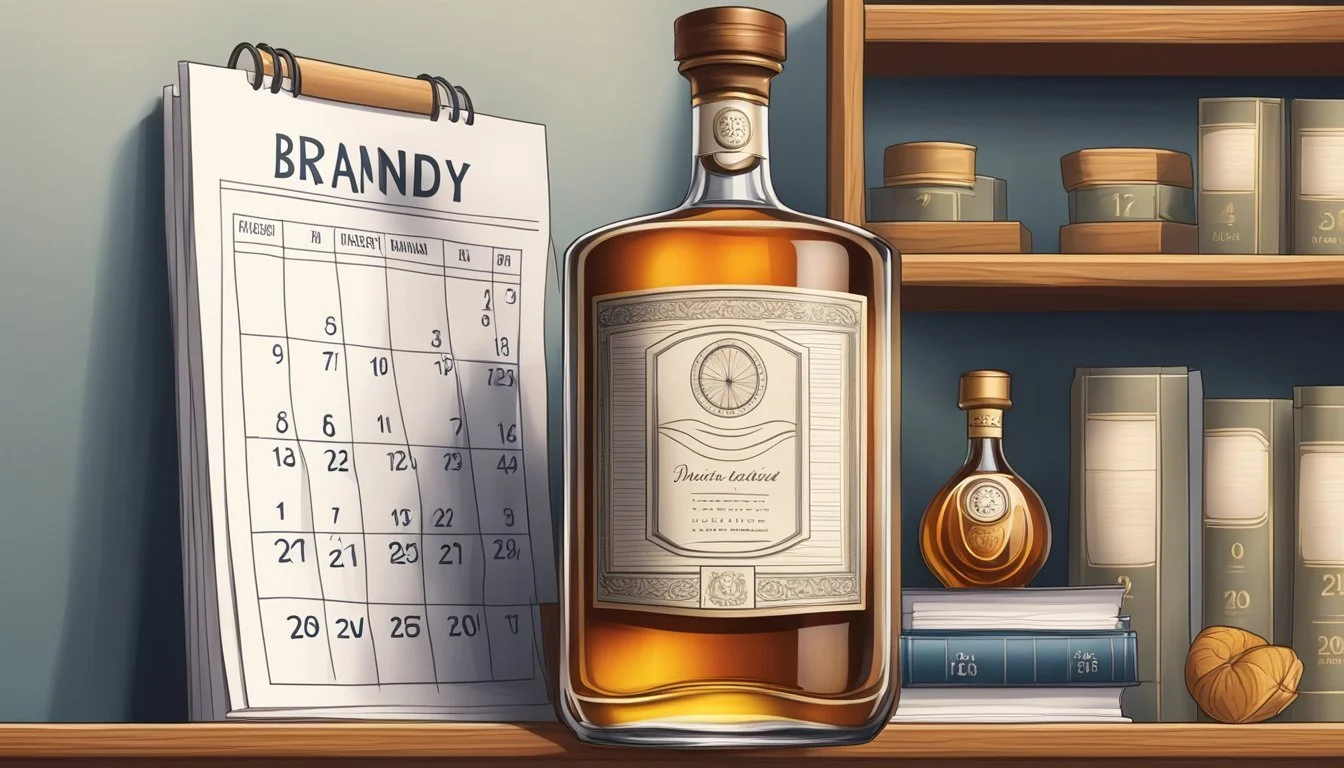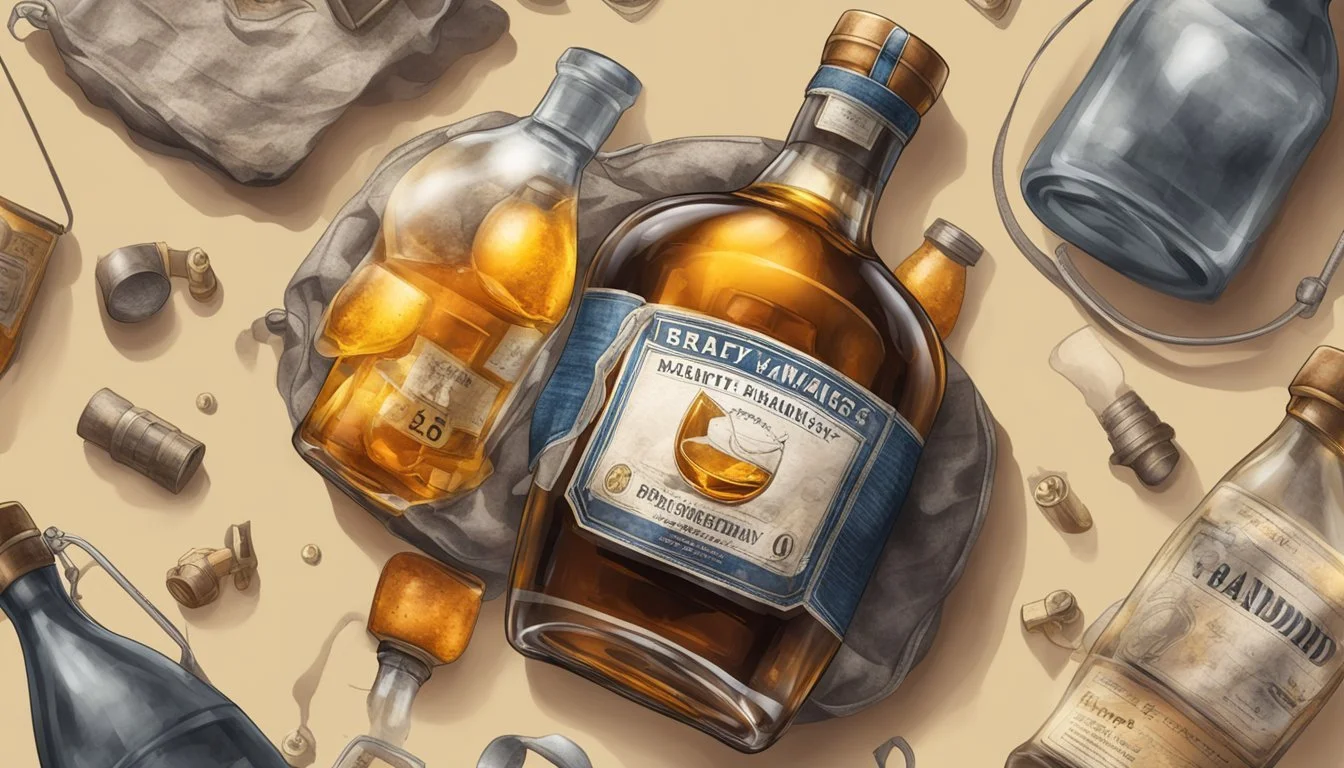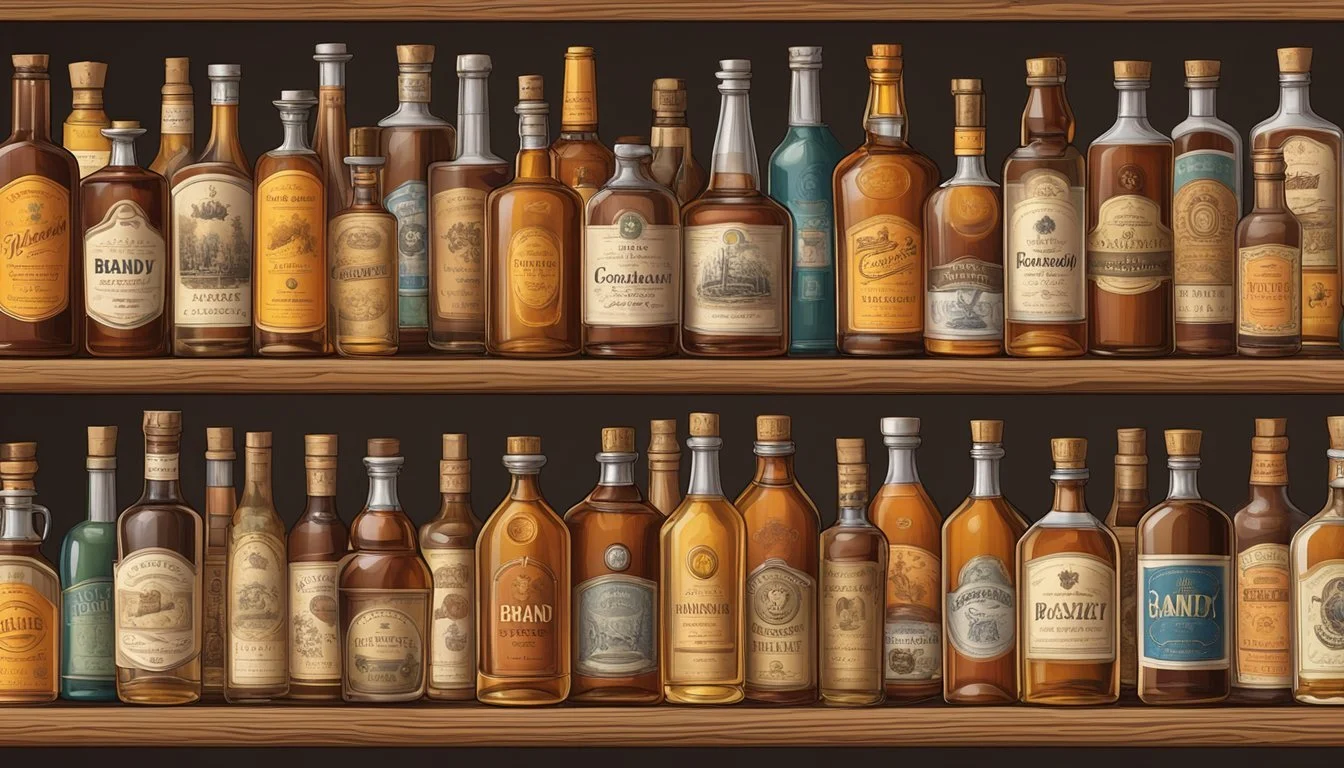Does Brandy Go Bad?
Understanding Shelf Life and Storage Tips
Brandy, a distilled spirit made from fermented fruit, is renowned for its longevity. Many enthusiasts appreciate brandy not just for its flavor but also for its resistance to spoilage. This spirit's high alcohol content, typically ranging from 35 to 60 percent ABV, acts as a natural preservative. Consequently, unlike perishable food and beverages, brandy is not subject to expiration in the same sense. This means that, from a food safety perspective, you can hold onto an opened bottle of brandy indefinitely without concern for it becoming unsafe to consume.
However, the enduring quality of brandy does not imply that its taste remains unaltered over time. After opening, exposure to oxygen, light, and fluctuations in temperature can influence the characteristics of the brandy. Proper storage is key; a cool, dark place with the bottle sealed tightly is recommended to maintain its optimal quality. As brandy ages, some connoisseurs might note subtle shifts in its complex flavors. This does not indicate spoilage but rather an evolution of the tasting experience.
Understanding Brandy
Before delving into the details of brandy, one must appreciate its unique composition, the intricacies of its aging process, and the significance of its alcohol content. These factors contribute to the durability and taste profile of the spirit.
Composition and Types
Brandy is a spirit produced by distilling fermented fruit juice—most commonly from grapes—though apple, apricot, and other fruits are also used. The types of brandy are largely defined by the fruit used and the region of production. For instance, Cognac and Armagnac are prestigious varieties hailing from specific regions in France and are exclusively made from grapes. Other fruit brandies, often labeled as eaux-de-vie, preserve the essence of the fruit they're derived from.
Aging Process
The aging process is central to defining brandy’s character. After distillation, brandy is aged in wooden casks, commonly oak, which imparts depth, complexity, and color to the spirit. The duration of aging varies, with some brandies resting for just a few years, while others mature for decades. During this time, interactions between the brandy and the cask develop its flavor profile.
Alcohol Content
Brandy typically contains 35 to 60 percent alcohol by volume (ABV), a range considerably higher than that of wine, which averages around 11.6 percent ABV. This significant alcohol content classifies brandy as a high-proof spirit and contributes to its longevity. The high concentration of alcohol acts as a preservative, allowing brandy to last for many years when stored properly.
Proper Storage of Brandy
The longevity and taste of brandy depend heavily on storage conditions. By maintaining the ideal environment for brandy, one can ensure its quality and flavor are preserved over time.
Ideal Conditions
The ideal storage for brandy involves keeping it in a cool, dry place away from direct sunlight. A consistent temperature around 55 to 60 degrees Fahrenheit (13 to 16 degrees Celsius) is optimal. Exposure to sunlight and high temperatures can deteriorate brandy more rapidly, altering its flavor and aroma.
Storing Opened vs Unopened Bottles
Unopened bottles of brandy can remain in good condition indefinitely if stored properly. Once the bottle is opened, it should be sealed tightly with the original cork or an airtight stopper to minimize oxidation. For added protection, one might consider using a vacuum sealer to extend the brandy's life after opening. Unlike wine, refrigeration isn't necessary for brandy, and it's typically stored in liquor cabinets or a pantry.
Unopened Brandy: Store upright in a cool, dark cabinet or pantry.
Opened Brandy: Ensure a tight seal with a cork or vacuum sealer; store upright in the same conditions as unopened bottles.
Shelf Life Factors
Brandy's shelf life can be affected by several factors:
Temperature: Fluctuations can cause brandy to expand and contract, potentially compromising the seal and allowing air to enter.
Light: Prolonged exposure to sunlight or artificial light can degrade the quality of brandy.
Humidity and Dryness: Extremely dry conditions can cause the cork to dry out, letting air in, whereas too much humidity can lead to mold growth.
By controlling these environmental factors, brandy can be maintained for years, with unopened bottles having the potential to retain their quality indefinitely under the correct storage conditions.
Determining Brandy Quality
When evaluating brandy quality, connoisseurs consider aspects like flavor profile and potential spoilage indicators to determine whether the beverage has maintained its intended characteristics or has degraded over time.
Flavor Profile Maintenance
The flavor profile of brandy is crucial to its quality; it should remain complex and nuanced. For an unopened bottle of brandy, aging continues within the bottle and can lead to the development of richer taste experiences over time. However, once opened, exposure to oxygen begins to gradually alter the brandy's flavor compounds.
Opened bottle: Over time, the brandy may lose some aromatic qualities and could exhibit a flat taste.
Unopened bottle: It generally preserves its original flavor profile better than an opened one.
Signs of Spoilage
Brandy is a high alcohol content spirit, which typically means it's safe to drink for a very long time. However, there are some tell-tale signs that a bottle of brandy's quality may be compromised:
Off Odor: A healthy brandy should have a pleasant and recognizable aroma. If a brandy emits a foul smell, it suggests deterioration.
Flavor Deterioration: Any off taste, or loss of the characteristic brandy flavors, can indicate spoilage.
Visual Cues: The appearance of sediment at the bottom or a cloudy appearance can also signal that the brandy is past its prime in terms of quality.
A person should always inspect old brandy for these signs to ensure the spirit will provide the rich, deep flavors they expect from a fine brandy. Quality can be subjective, but these guidelines assist in assessing whether brandy is still of a desirable standard.
Maximizing Brandy Longevity
To ensure the optimal shelf life of brandy, it is important to understand the effects of opening a bottle and the various techniques available for long-term preservation. Proper handling and storage are key to maximizing the life of this spirit.
Handling After Opening
Once a bottle of brandy is opened, oxygen exposure becomes a concern, as it can lead to oxidation which may alter the flavor profile. To maintain quality:
Always reseal the bottle tightly after pouring.
Use smaller bottles to transfer unused brandy, minimizing air space if the original bottle becomes less than half full.
Limit the time the bottle is open to prevent excessive evaporation.
Long-Term Preservation Techniques
Implementing the right storage measures can extend the shelf life of brandy significantly. Here are specific methods:
Temperature: Store the bottle at a consistent temperature between 10°C and 20°C (50°F to 68°F) to prevent the alcohol from evaporating or the liquid from clouding.
Light: Keep the brandy in a dark place, away from direct sunlight, to avoid degradation of quality.
Humidity: A moderately humid environment is ideal to prevent the cork from drying out.
Position: Bottles should be stored upright to prevent the cork from interacting with the alcohol, which can alter the taste.
Usage: For those looking to incorporate brandy into juices, mixes, cocktails, or recipes, do so while the brandy is within its peak quality period.
Avoid freezing the brandy, as extreme cold is not necessary and can damage the liquid's consistency.
By adhering to these parameters, the preservative qualities of the high alcohol content are best leveraged to extend the brandy's life post-opening.
Potential Health and Safety Concerns
When considering the health and safety concerns of consuming brandy, two main factors come into play: the potential risks of consuming expired brandy and the science behind alcohol's interaction with bacteria.
Consuming Expired Brandy
It's commonly understood that brandy does not expire in a way that makes it unsafe to drink. Due to its high alcohol content, usually between 35% to 60% ABV, brandy acts as a preservative for itself. As a result, an unopened bottle of brandy is considered to have an indefinite shelf life. However, once opened, brandy can experience a change in quality over time. Although it's rare, if a bottle is stored improperly for a lengthy period, one might observe spoilage signs such as cloudiness or an unusual odor. In such cases, it's advisable to discard the bottle to avoid consuming subpar or potentially spoiled brandy.
Alcohol and Bacteria Interaction
Effect of Alcohol on Bacteria:
Neutralizes Pathogens: Brandy's high alcohol content inhibits bacteria and pathogen growth, ensuring its longevity.
Preservative Qualities: The alcohol acts as a natural barrier against spoilage, decreasing the likelihood of the brandy becoming unsafe to drink.
Conditions Favoring Bacteria Growth:
Poor Storage: When brandy is exposed to light, heat, or oxygen, it may lead to conditions that could potentially support mold or bacteria.
Contamination: Introduction of contaminants, such as using unclean utensils, can potentially introduce bacteria into the brandy.
Although the term 'expired' is not typically associated with spirits like brandy, one should exercise common sense and caution. If the brandy has dramatically changed in appearance, taste, or smell, it may be best to discard it to ensure food safety.
Additional Considerations for Brandy Connoisseurs
When approaching brandy from a connoisseur's standpoint, it's important to understand the nuances of storage and lifestyle choices that influence the tasting experience. Each factor bears significant weight on the spirit's shelf life and character.
Impact of Environmental Factors
Brandy's longevity is considerably affected by its storage environment. Heat and sunlight can accelerate the aging process, potentially altering the flavor profile and clarity of the spirit. Connoisseurs should store brandy in a cool place, away from direct sunlight, to avoid these adverse effects. A dry place is also essential, as excessive moisture can damage the seal and label, leading to potential oxidation.
Temperature: Consistently cool, ideally between 15-20°C (59-68°F).
Light: Minimal exposure, away from UV rays.
Humidity: Low to moderate, to preserve the cork and label integrity.
Transferring brandy to a decanter may enhance the presentation, but it is not recommended for long-term storage as it may increase the rate of oxidation, affecting the brandy's quality.
Brandy as Part of a Lifestyle
Incorporating brandy into one's lifestyle involves more than casual consumption. A true aficionado appreciates the infusion of life and tradition in each bottle. Brandy, derived from distilled apples or other fruits, carries the essence of its origin, and as it ages, its complexity deepens. It's not uncommon for enthusiasts to compare the aging process of a fine brandy to that of life itself—both improving with age if cared for properly.
Savvy enthusiasts might pair their brandy with complementary flavors or even explore brandy's versatility by using it as a base for infusions with fruits or blending in a touch of rum for a unique twist. Here, brandy isn't just a drink but a sophisticated hobby that ages as gracefully as the liquid within the bottle.
Frequently Asked Questions
When exploring the longevity and proper care of brandy, readers frequently have questions regarding its shelf life, storage, and indications of spoilage. This section addresses those queries with reliable information.
Common Misconceptions
Myth: Brandy expires like milk or fresh produce.
Fact: Brandy is a distilled spirit with high alcohol content (35-60% ABV), rendering it virtually impervious to expiration in terms of safety. It does not spoil like food items that can harbor bacteria because the alcohol acts as a preservative.
Myth: A cloudy brandy means it is unsafe to drink.
Fact: While a change in liquid appearance such as cloudiness may indicate degradation in quality, it does not mean the brandy is unsafe. The aromas and flavors might be altered, which could affect the drinking experience.
Storage Myths Debunked
Incorrect Belief: Brandy needs to be stored in a basement.
Accurate Practice: Brandy should be stored in a cool, dark place, away from direct sunlight and with stable temperature conditions.
False Assumption: An opened bottle of brandy will last just a few months.
Reality Check: If stored correctly with a tightly sealed cap, an opened bottle of brandy can maintain its quality for years.
Expert Tips for Enjoying Brandy
To experience brandy's full potential, consider these pointers:
Always store brandy standing upright to prevent the alcohol from deteriorating the integrity of the cork.
If a brandy has been stored for a prolonged period, inspect the liquid for changes in color or consistence and sniff for any off-putting aromas before tasting.
While brandy's longevity is impressive, its nuances may degrade in quality over decades. For the best sensory experience, consume within a reasonable time frame after opening.
This section has covered the essentials around the misconceptions and storage myths of brandy, as well as offered expert advice to maximize the enjoyment of this dignified distilled spirit.
Conclusion
Brandy generally has an indefinite shelf life due to its high alcohol content, which acts as a preservative. For those who prioritize maintaining quality and flavor, proper storing conditions are paramount.
Storage Tips:
Store brandy in a cool, dark place.
Keep the bottle upright to prevent the cork from deteriorating.
Ensure the bottle is tightly sealed to minimize oxidation.
While age doesn't deteriorate brandy the way it affects perishable goods, an opened bottle may experience subtle changes in flavor over time. These changes do not typically render the brandy unsafe for consumption but could impact the sensory profile preferred by connoisseurs.
If a consumer detects an off odor or an unusual taste, it’s prudent to consider the brandy's condition before consumption. However, such cases are not common when proper storage methods are applied. As brandy matures, its complexity can increase, making it appealing to those who appreciate the nuances of aged spirits.
In essence, brandy’s shelf life is extensive, and while it doesn't "go bad" in the conventional sense, enthusiasts should store it with care to ensure its enduring quality.





